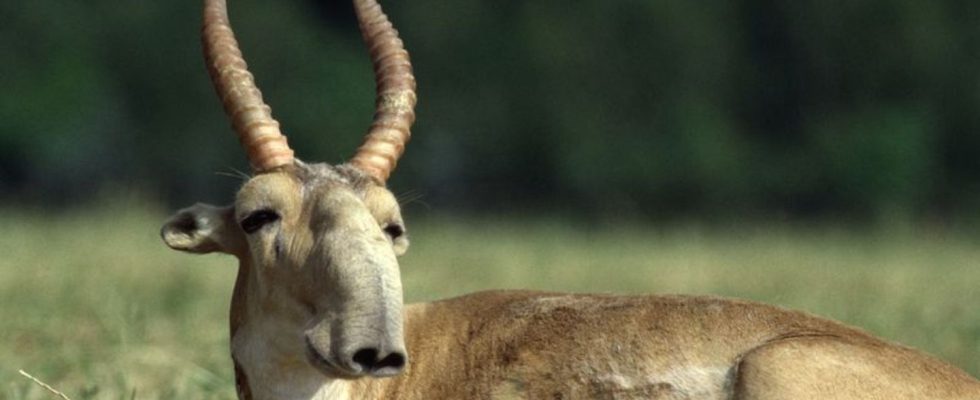“Nature without borders”
States want to improve protection for migratory animal species
The measures to protect the saiga antelope in Central Asia have had a positive effect. photo
© Rotislav Stach/Federal Agency for Nature Conservation/dpa
Migratory animals are nomads of the air, the oceans, and the land. These include species that fascinate many people. An international conference has now agreed on measures to protect them.
It only works with cross-border cooperation – that is the fundamental insight and declaration of intent of the 14th Conference of Member States (COP14) of the Bonn Convention for the Protection of Migratory Wild Animals in Samarkand.
Significantly, the conference featured government officials, scientists and conservationists from the UN Environment Program UNEP and the Secretariat of the Convention on the Conservation of Migratory Wild Animals Animal Species (CMS) – the so-called Bonn Convention – was organized, the term “Nature without Borders”.
More than 130 states have now joined the Bonn Convention, which came into force in 1983. At this year’s conference in Uzbekistan, a report was presented on the situation of migratory species worldwide, which raises concerns, particularly with regard to marine life.
The biggest threats
Almost all – 97 percent – of the fish species listed in the CMS are threatened with extinction. These included migratory sharks, rays and sturgeons, whose populations have declined by 90 percent since the 1970s. The two biggest threats to migratory species are excessive exploitation, such as fishing, and habitat loss due to human activity. Climate change, pollution and invasive species also have major negative impacts, the report said.
But there was also good news in Samarkand: humpback whales, for example, are doing better. And the measures to protect the saiga antelope in Central Asia have worked so well that the species has not only made a remarkable recovery. The project is now intended to serve as a blueprint for other animal species whose future does not currently look good.
The topics that concerned the delegates included challenges posed by bycatch in fishing, plastic in the oceans, but also protection against overfishing and the effects of deep-sea mining.
The results
For a week, delegates discussed the problems of snow leopards and sea turtles, the highest protection status for the endangered Baltic Sea porpoise and other animals that should be better protected.
Specific results include the adoption of an action plan to protect marine species off the coast of West Africa, involving local communities whose livelihoods are threatened by overfishing.
“The agreements reached in Samarkand are clear commitments from the states for stricter and more efficient protective measures,” said Nicolas Entrup, head of international cooperation at OceanCare, drawing a positive conclusion from the week-long conference. The inclusion of other species and populations – such as the Baltic Sea porpoise (Phocoena phocoena), the sand tiger shark (Carcharias taurus) or the Chilean pelican (Pelecanus thagus) – in the lists of endangered or critically endangered species means strict protection, but at the same time also an indication of their worrying state of conservation.
Better collaboration necessary
“It is now important that these decisions are quickly and fully implemented in practice and defended against pressure from economic and industrial interest groups in order to overcome the countless challenges that migratory species face,” emphasized Entrup. He gave the example of avoiding ship collisions with sea creatures.
The conference’s outcomes also include a new initiative to identify, protect and connect areas important to migratory species. “Connectivity” is the word that was heard again and again in Samarkand. It is precisely the destruction and fragmentation of habitats, for example through road construction or through the spread of human settlements in areas that are migration corridors for animals, that causes problems for land-migrating animal species.
“Connectivity” also means that different organizations want to work together within the initiative, including the Convention for Biological Diversity as well as the UN Convention against Desertification, UNEP and the International Union for Nature Conservation or the Nature Conservation Organization WWF, to name just a few.

